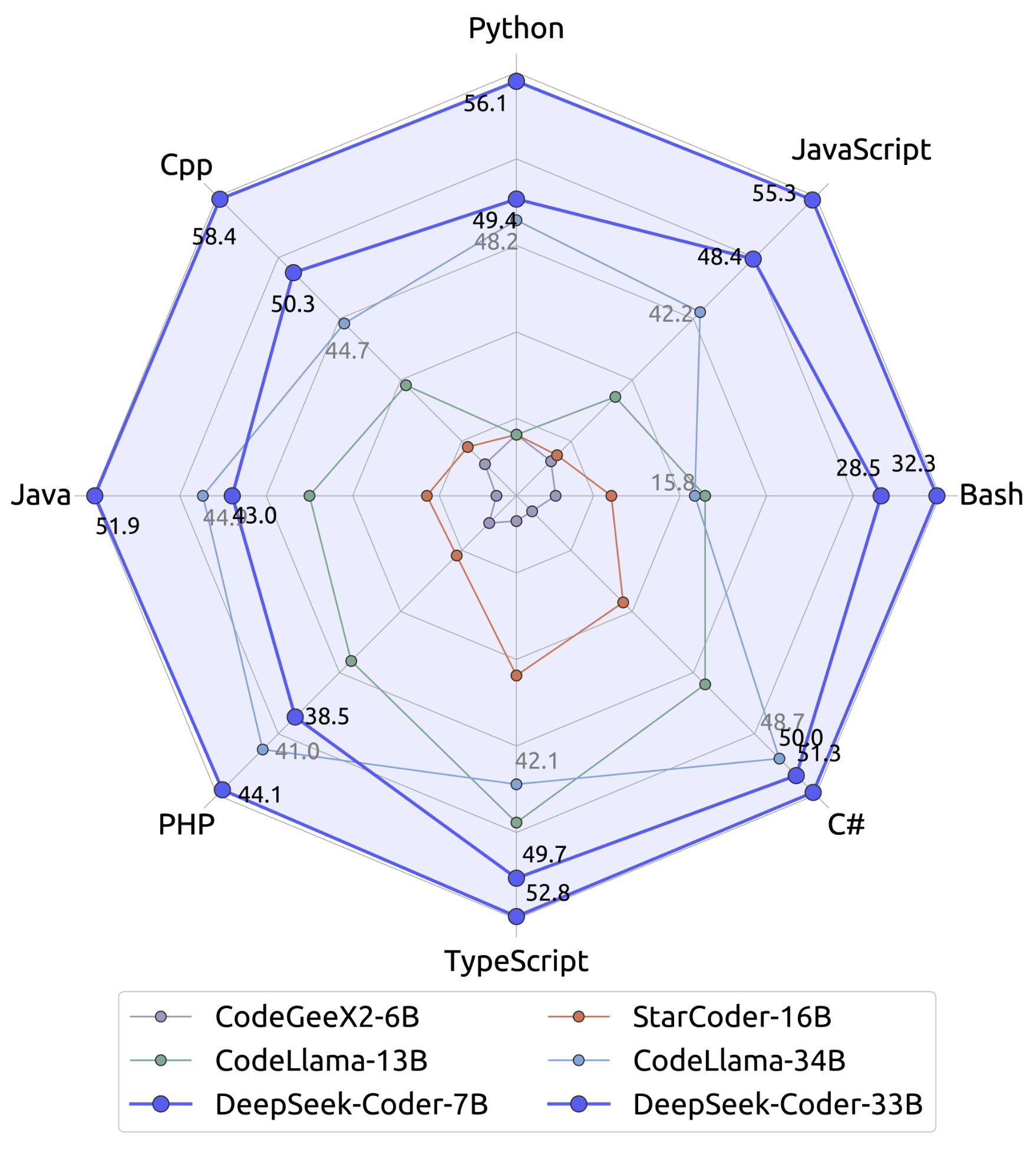
Afrotapes
Add a review FollowOverview
-
Founded Date September 26, 1969
-
Sectors Information Technology
-
Posted Jobs 0
-
Viewed 30
Company Description
Nvidia Stock May Fall as DeepSeek’s ‘Amazing’ AI Model Disrupts OpenAI

HANGZHOU, CHINA – JANUARY 25, 2025 – The logo of Chinese artificial intelligence company DeepSeek is … [+] seen in Hangzhou, Zhejiang province, China, January 26, 2025. (Photo credit ought to check out CFOTO/Future Publishing by means of Getty Images)

America’s policy of limiting Chinese access to Nvidia’s most innovative AI chips has actually accidentally helped a Chinese AI designer leapfrog U.S. competitors who have full access to the business’s most current chips.

This proves a basic reason that start-ups are often more successful than large companies: Scarcity generates innovation.
A case in point is the Chinese AI Model DeepSeek R1 – a complex analytical design taking on OpenAI’s o1 – which “zoomed to the global leading 10 in performance” – yet was developed even more quickly, with fewer, less effective AI chips, at a much lower expense, according to the Wall Street Journal.
The success of R1 need to benefit business. That’s since companies see no reason to pay more for an efficient AI model when a less expensive one is available – and is likely to enhance more rapidly.
“OpenAI’s design is the best in efficiency, however we likewise don’t want to pay for capacities we don’t require,” Anthony Poo, co-founder of a Silicon Valley-based startup utilizing generative AI to anticipate financial returns, told the Journal.
Last September, Poo’s company moved from Anthropic’s Claude to DeepSeek after tests showed DeepSeek “performed likewise for around one-fourth of the cost,” kept in mind the Journal. For instance, Open AI charges $20 to $200 each month for its services while DeepSeek makes its platform available at no charge to private users and “charges just $0.14 per million tokens for developers,” reported Newsweek.
Gmail Security Warning For 2.5 Billion Users-AI Hack Confirmed
When my book, Brain Rush, was published last summer, I was concerned that the future of generative AI in the U.S. was too based on the biggest technology companies. I contrasted this with the imagination of U.S. startups during the dot-com boom – which spawned 2,888 going publics (compared to no IPOs for U.S. generative AI start-ups).
DeepSeek’s success could encourage brand-new competitors to U.S.-based big language model developers. If these start-ups build effective AI models with fewer chips and get improvements to market quicker, Nvidia income might grow more slowly as LLM developers replicate DeepSeek’s strategy of utilizing less, less sophisticated AI chips.
“We’ll decline comment,” wrote an Nvidia spokesperson in a January 26 email.
DeepSeek’s R1: Excellent Performance, Lower Cost, Shorter Development Time
DeepSeek has actually impressed a leading U.S. venture capitalist. “Deepseek R1 is one of the most remarkable and outstanding advancements I have actually ever seen,” Silicon Valley venture capitalist Marc Andreessen composed in a January 24 post on X.
To be fair, DeepSeek’s innovation lags that of U.S. competitors such as OpenAI and Google. However, the business’s R1 model – which launched January 20 – “is a close competing regardless of using fewer and less-advanced chips, and in some cases avoiding steps that U.S. developers considered necessary,” kept in mind the Journal.
Due to the high cost to deploy generative AI, enterprises are significantly wondering whether it is possible to make a positive return on investment. As I composed last April, more than $1 trillion might be invested in the innovation and a killer app for the AI chatbots has yet to emerge.
Therefore, organizations are delighted about the prospects of lowering the investment required. Since R1’s open source model works so well and is a lot less costly than ones from OpenAI and Google, business are keenly interested.
How so? R1 is the top-trending model being downloaded on HuggingFace – 109,000, according to VentureBeat, and matches “OpenAI’s o1 at simply 3%-5% of the expense.” R1 also supplies a search function users judge to be remarkable to OpenAI and Perplexity “and is only rivaled by Google’s Gemini Deep Research,” noted VentureBeat.
DeepSeek established R1 faster and at a much lower expense. DeepSeek stated it trained among its newest models for $5.6 million in about two months, kept in mind CNBC – far less than the $100 million to $1 billion range Anthropic CEO Dario Amodei cited in 2024 as the expense to train its models, the Journal reported.
To train its V3 design, DeepSeek utilized a cluster of more than 2,000 Nvidia chips “compared with tens of countless chips for training models of similar size,” kept in mind the Journal.
Independent analysts from Chatbot Arena, a platform hosted by UC Berkeley researchers, ranked V3 and R1 models in the top 10 for chatbot efficiency on January 25, the Journal wrote.
The CEO behind DeepSeek is Liang Wenfeng, who manages an $8 billion hedge fund. His hedge fund, named High-Flyer, utilized AI chips to develop algorithms to identify “patterns that could affect stock costs,” noted the Financial Times.
Liang’s outsider status assisted him be successful. In 2023, he introduced DeepSeek to establish human-level AI. “Liang built a remarkable facilities team that really understands how the chips worked,” one founder at a rival LLM company told the Financial Times. “He took his best individuals with him from the hedge fund to DeepSeek.”
DeepSeek benefited when Washington banned Nvidia from exporting H100s – Nvidia’s most powerful chips – to China. That forced local AI companies to engineer around the deficiency of the restricted computing power of less effective regional chips – Nvidia H800s, according to CNBC.
The H800 chips move data between chips at half the H100’s 600-gigabits-per-second rate and are normally cheaper, according to a Medium post by Nscale primary business officer Karl Havard. Liang’s team “currently understood how to solve this problem,” kept in mind the Financial Times.
To be reasonable, DeepSeek said it had stockpiled 10,000 H100 chips prior to October 2022 when the U.S. enforced export controls on them, Liang informed Newsweek. It is unclear whether DeepSeek used these H100 chips to establish its models.
Microsoft is extremely pleased with DeepSeek’s achievements. “To see the DeepSeek’s brand-new design, it’s extremely impressive in terms of both how they have actually really successfully done an open-source design that does this inference-time calculate, and is super-compute efficient,” CEO Satya Nadella stated January 22 at the World Economic Forum, according to a CNBC report. “We should take the advancements out of China really, extremely seriously.”
Will DeepSeek’s Breakthrough Slow The Growth In Demand For Nvidia Chips?
DeepSeek’s success must stimulate modifications to U.S. AI policy while making Nvidia investors more cautious.
U.S. export restrictions to Nvidia put pressure on start-ups like DeepSeek to prioritize performance, resource-pooling, and collaboration. To create R1, DeepSeek re-engineered its training procedure to use Nvidia H800s’ lower processing speed, previous DeepSeek employee and present Northwestern University computer technology Ph.D. trainee Zihan Wang told MIT Technology Review.
One Nvidia scientist was enthusiastic about DeepSeek’s achievements. DeepSeek’s paper reporting the results revived memories of pioneering AI programs that mastered parlor game such as chess which were built “from scratch, without imitating human grandmasters initially,” senior Nvidia research scientist Jim Fan stated on X as included by the Journal.
Will DeepSeek’s success throttle Nvidia’s growth rate? I do not understand. However, based on my research, services clearly want powerful generative AI designs that return their investment. Enterprises will have the ability to do more experiments focused on finding high-payoff generative AI applications, if the expense and time to construct those applications is lower.
That’s why R1’s lower cost and much shorter time to perform well need to continue to attract more industrial interest. A key to providing what businesses desire is DeepSeek’s skill at optimizing less .

If more start-ups can reproduce what DeepSeek has achieved, there might be less demand for Nvidia’s most expensive chips.
I do not understand how Nvidia will react need to this occur. However, in the brief run that might mean less profits development as startups – following DeepSeek’s method – build designs with less, lower-priced chips.


